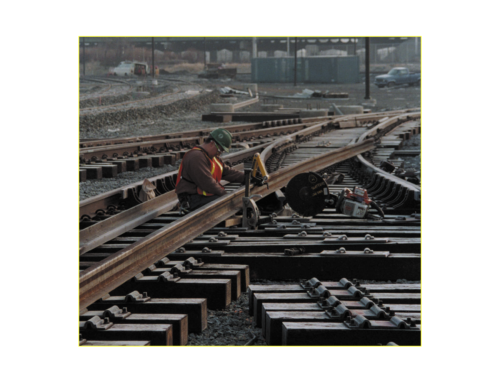 The principles of mediation could play a much greater role in the decision-making for planning and implementing investments in improving our cities’ infrastructure. Capital projects involving urban redevelopment, transportation, water and energy require a great deal of political will, substantial upfront investment and a very lengthy process for implementation. Typically, the public involvement is merely a box to be checked in the environmental review process and not a serious effort to seek and build consensus. Project opponents often do not get seriously engaged at the outset and can create greater trouble later on, when a simple majority of the governing entity wants to move forward.
The principles of mediation could play a much greater role in the decision-making for planning and implementing investments in improving our cities’ infrastructure. Capital projects involving urban redevelopment, transportation, water and energy require a great deal of political will, substantial upfront investment and a very lengthy process for implementation. Typically, the public involvement is merely a box to be checked in the environmental review process and not a serious effort to seek and build consensus. Project opponents often do not get seriously engaged at the outset and can create greater trouble later on, when a simple majority of the governing entity wants to move forward.
The delays in these projects can not only delay the benefits to communities, but also add tremendously to the cost. Cost and delay issues in turn further delay and jeopardize the project by adding more controversy. Consensus-building is a form of mediation in multi-stakeholder decision-making, and in many cases can help solve these problems by expediting the time to get to an agreement – and in addition make agreements that can last. This article describes the conditions and steps of consensus-building and how the process can improve the schedule and support for urban infrastructure improvements.
The Consensus-Building Process
Consensus can be defined as a general or wide spread agreement among all the members of a group of diverse stakeholders. It is not about achieving unanimity. Rather it is more of a nearly unanimous agreement. The process goes beyond reaching consensus to implementing the agreement successfully. It involves investing enough in your decision-making process to get the right people to the table, and to get the right ideas on the table, in ways that invite productive problem solving. It typically calls for the involvement of some form of mediator to shepherd the process.
In consensus-building the mediator is used to assist competing interest groups to reach agreement on issues in controversy affecting a large number of people. Consensus-building typically involves informally structured, face-to-face interactions among representatives of stakeholder groups. One objective is to gain early participation from affected interests with differing viewpoints, including potential opponents. The goal is to produce sound decisions with broad support, thus greatly reducing the likelihood of subsequent disagreements or legal challenges.
The book by Lawrence Susskind and Jeffrey Cruikshank, “Breaking Robert’s Rules: the new way to run your meetings, build consensus and get things done“, is an excellent blueprint of how to conduct a consensus-building process. The purpose is to improve the simple majority rule process run by Roberts. Rules of procedures, with a process intended to gain broader support and better solutions. Five steps are identified in the consensus- building process: convening, clarifying responsibilities, deliberating, deciding, and implementing agreements.
Consensus-Building Steps
STEP 1 – CONVENING
Every project must have a public champion, perceived as trustworthy, who has the
interest of the community at heart and the wherewithal to get everyone’s attention. This
is the type of person that would serve as a convener. He would be assisted by a skilled
mediator to support his efforts, but he must be the face of the process. To begin with, the
convener, the community and other stakeholders conduct a written conflicts assessment
to determine if a consensus-building process makes sense. Once decided the mediator and
convener can educate interested parties on the process and help them think through
whether they would wish to participate.
STEP 2 — CLARIFYING RESPONSIBILITIES
After a conflicts assessment and a decision to proceed is made, the next activity is to clarify the roles – politicians, stakeholder groups, community representatives, mediators, and recorders. Agendas for meetings and ground rules for the process are all established during step 2. The group should assess available computer-based communication options since this can greatly simplify the process and get greater participation from more representatives and groups of stakeholders. A mailing list or email distribution list should be established as well, to keep everyone up to date on the process.
STEP 3 — DELIBERATING
Deliberations are a critical step in reaching agreement. As in any mediation the parties must feel their interests are heard and understood by the other parties. This must be done in a constructive fashion and the skills of the mediator will be very important in making this happen. Brainstorming and inventing must be separated from commitments so that all ideas are given consideration before beginning to narrow down the options. If necessary you can create subcommittees and seek expert advice. When it comes time to write everything down you should use a “single text” procedure. This a method to work with one neutral document recording the progress which is reviewed and approved by all the stakeholders.
STEP 4 — DECIDING
Consensus-building, like other forms of collaborative conflict resolution, is based on the four basic principles of “win-win” negotiation (see Fisher and Ury 1996): separate the people from the problem; focus on interests, not positions; invent options for mutual gain; and use objective criteria. In this stage of the process, participants should try to maximize joint gains. All the principles of effective interest based and collaborative negotiations should be applied in coming to decisions. Multiple drafts of proposals may be circulated until consensus is reached. Again a record of the decision making process and conclusions is made through a single text document procedure.
STEP 5 — IMPLEMENTING AGREEMENTS
Once the decision has been reached, an implementing agreement should be finalized which incorporates some history of the process and participants and outlines the areas where agreement has been reached. All the stakeholders should be signatory to this agreement. This agreement should indicate not only how the agreement will be implemented but also how it will be monitored and enforced. There should be a process in the implementing agreement for how conflicts will be resolved that arise later on. Once again, a collaborative process such as mediation or using a standing neutral decision-maker, should be considered in the terms in the agreement.
Conclusions
A structured consensus-building process can help speed up the time to reach agreement for urban infrastructure projects and thereby can save significantly in costs. If done correctly, a consensus based implementing agreement will avoid the problem of detractors later challenging a project by making certain they are involved from the start. Mediators will help by using their skills of encouraging constructive dialogue and the exploring alternative solutions. In addition, the single text procedure allows the mediator to manage the development of the agreement. Hopefully, consensus-building will someday become a standard tool in the planning process and help speed up necessary infrastructure development.



